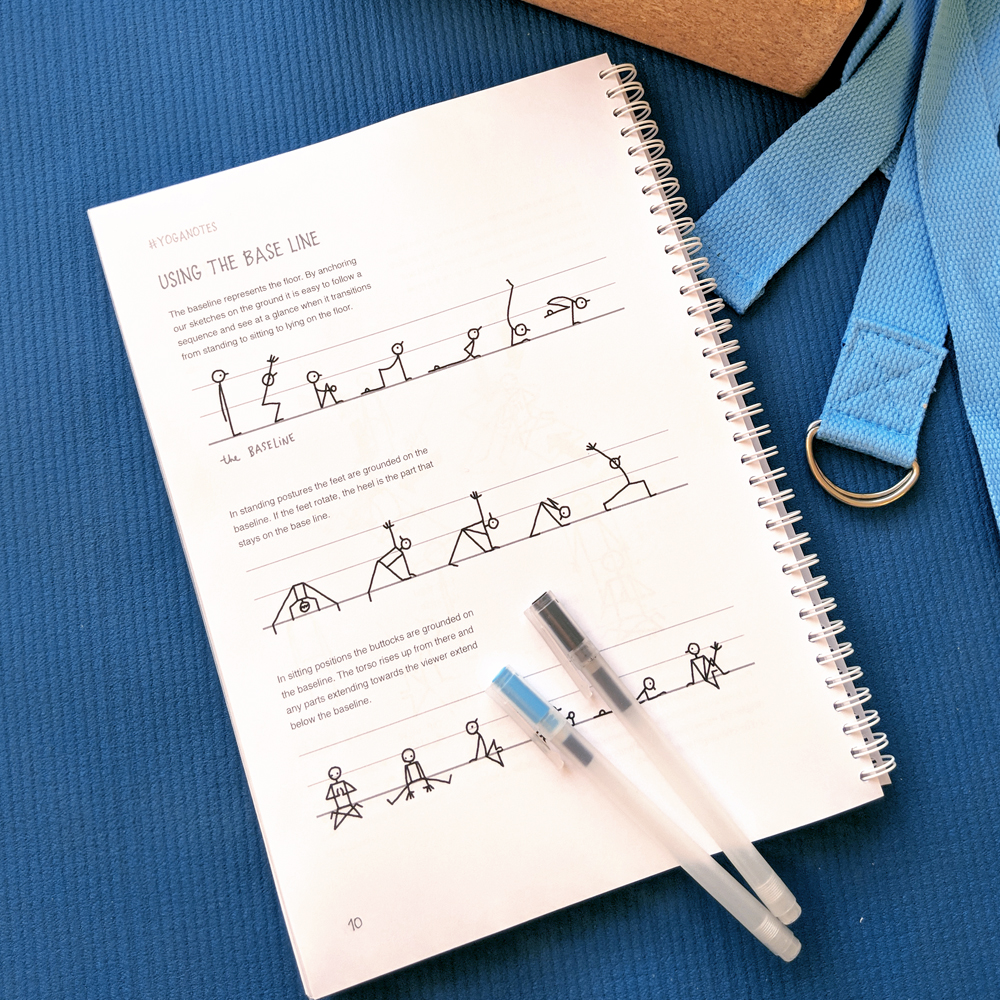There is a secret brewing in the yoga world – the yoga world that I inhabit and contribute to, anyway. It is something that yoga teachers confide in each other about, some entrenched in shame, and others, with a hint of defensiveness or nonchalance, anticipating judgement and criticism.
Before you die from the suspense, I want to ask you a question, whether you are a yoga teacher or student: What do you think your yoga teacher’s process is to plan a class? Do you think they come up with something completely new and original every single time?
Of course, just as there is more than one way to skin a cat (sorry, not a very yogic proverb), there are countless ways to plan a class. It can depend on the theme; the teacher’s experience, training, or style; the demands of the studio and their clientele; the season; the time of the month; the moon; life events; and so the list goes on. The process of creation is likely to be influenced by the most recent source of inspiration to the yoga instructor. What if that source was a 45-minute back-bending flow on <name of well-renowned online yoga video provider>?
I have countless anecdotes of vinyasa yoga teachers using online yoga videos to help plan their classes. This can range anywhere from pilfering a class pose by pose, even word for word, to using a few different videos to piece together a well-rounded class, to simply using one transition or maybe a general theme from a video.
When I first started using online videos to get ideas to plan classes after teaching full-time for just under a year, I felt dull anxiety that I would be ‘caught out.’ However, as with anything, if you are not caught doing something you think you shouldn’t be doing, the fear eventually dissipates and you continue carefree. Until that is, a loved one sees you watching an online yoga video whilst frantically scribbling down stick figures, and expresses an element of surprise and just enough judgement, to let all of your previous fears come flooding back.

Such worries include: Is this ok? Am I the only one? Will I get sued? Am I a fraud? What if Anna in the front row also has a subscription to <name of well-renowned online yoga video provider>, has already taken this class, and realises? Am I a bad person? Am I a liar? Worse, is this stealing?
My question is: Are these anxieties founded?
The Case for Using Video Content to Inform our Classes Liberally
The reality is that many modern-day vinyasa teachers struggle with the (oft- imagined) demand for creative sequencing as well as a real lack of time and energy to focus on their own practice. This correlates directly to the inspiration—or lack thereof—that will inform their own teaching and style.
For many of us, online yoga videos make up a large part of our personal practice. Videos are a happy medium as they fall somewhere between studio and self-practice. I have learnt so much from online videos with knowledgeable and experienced teachers, who I would not otherwise have had access to, due to the limits set by geography, time and money. I also love that taking online classes helps me acquire and consolidate new information.
Secondly, it is still always going to be you standing in front of the class, guiding the attendees with your words, your voice and your adjustments, and helping to lead the energy and atmosphere of a class. Every person is a unique makeup of past impressions and brings a unique flavour to their class. As long as you are teaching from genuine experience and enthusiasm, then your classes cannot be the same as someone else’s.
“Books serve to show a man that those original thoughts of his aren’t very new after all’’. Abraham Lincoln
Despite that, no idea is fully original. Everything we create is a patchwork of knowledge and ideas that are gleaned, learned, and interpreted from others. As a teacher, you also know that although you may have designed and fine-tuned a sequence, much of it will have to be adjusted when you are faced with a room full of students of differing abilities and needs, as well as different spaces and available props.
Liberally, but Carefully and Wisely
“Immature poets imitate; mature poets steal.”
– T.S. Eliot
Teachers have choices – for example, they can be very consistent with their sequences, sticking to nearly the same sequence every week, which may well bring them steady students of a certain proclivity. Others (myself included), prefer to pepper their classes with more variety. I am not really a creature of habit and this freedom suits me well, and I know my students have come to expect this from me. That does not mean that I try and reinvent the wheel every few weeks. The general arch of class remains similar and I try my best to weave in continuing threads, themes, and ideas that run from class to class. Sometimes, these ideas flow very freely, whilst other times my creative juices are all dried up. That is when the videos tend to be just what the doctor ordered to cure a case of creative-block.
This is also when it might be the most tempting to go full-on copycat. But maybe it is worth remembering how you felt as a kid when someone copied your homework, your drawing or, God-forbid, your outfit. Whilst we are all adults now, that basic feeling of someone ‘stealing’ your idea, whilst flattering, can still be irksome. OK, so, the online teacher is unlikely to ever know that you have used their class, but that is not the point. Maybe the teacher spent hours and hours planning something (not to mention how much dedication and practice it may have taken them to get to where they are now), that you come along and pull-off as your own.
Not only does this not sit well for most of us, it also goes against yogic moral discipline of non-stealing, asteya. This is why it might be a nice idea to acknowledge your information source if one video is the key informer of your class, just as you would if you were writing a book or paper.
The word inspiration is really key here. Are you using online content to inspire you, to feed your passion to study and share yoga in a way that rings true to you? Or, are you an uninspired robot who does the bare minimum you can get away with? As long as we keep asking ourselves these questions regularly and practicing the introspection that we preach about, we can share knowledge and sequences that speak to us, regardless of where they came from.
How might this look in practice?
If, like me, you intend to continue, or are even inspired to begin to, use video content to inform your classes, then I have compiled a few tips to do so.
These days, I find inspiration for classes by attending at least one studio class per week a priority, maintaining some form of self-led practice, and following videos online. I also follow useful Instagram accounts, such as Dr. Garrett Neill and Hypermobile Yogis, which provide constant, bite-sized chunks of information and asana modifications. Of course, every week is not the same, thus each week may be made up of varying amounts of these aspects. The result of all these sources of information allow me to keep classes well-informed anatomically and also to keep classes more accessible to more people.

If you are using online content to help create your classes, here are some basic guidelines to staying genuine:
1. Never say something you don’t understand or believe. It will show.
2. Consider acknowledging the teacher(s) who (you presume) created the content originally when teaching. For example, you could say something like ‘the inspiration for this class comes from a well-known teacher called <insert name> that I follow/like a lot’. Or, if a student tells you they really enjoyed something about a class that you can identify the source of, direct them to that source.
3. Don’t copy a class pose by pose, word for word. Only take advantage of things that speak to you, that you found useful and inspiring. It will be stressful trying to learn a script and you may find that you are less able to adapt the class when faced with a mixture of students in a public class.
4. Consider using multiple sources of inspiration rather than just one, to help the classes feel more your own.
5. Always check yourself and keep questioning what you are teaching. This is not only to keep your students safe and satisfied but more to keep your yoga informed, critical and genuine.
We should be able to use videos and online content to help inform our classes guilt-free. Let’s remember to use generous servings of mindfulness and honesty as we do so, so that as yogis and knowledge-sharers, our integrity remains intact.
Edited by Ely Bakouche





